Know how to treat coffee-how to tell the difference between sunshine and washing, which is sour and which is sweeter
Professional coffee knowledge exchange more coffee bean information please follow the coffee workshop (Wechat official account cafe_style)
Coffee Xiaobai Advanced Level 2: each individual coffee has a unique regional flavor, Coffee Xiaobai Advanced Level 1 | Coffee from the top ten American producing regions begins to learn coffee from balanced American beans, and begins to understand the processing methods of beans. The second level of coffee tasting begins with the understanding of coffee bean treatment:
This level begins to understand the various treatments of boutique coffee, and the description of flavor includes subjective factors. I think the sour taste of this water-washed bean is more exciting, and the flavor of this sun-dried bean is more complex and layered.
For example: Yega Xuefei, sun Yega and water-washed Yega are the most common, because the treatment is different, so the beans look different.
The difference between the appearance of sun-cured and washed coffee beans
Observe from silver skin
In the process of processing, the refined washing method usually removes the silver skin from the coffee beans, showing a special luster, but the dry and refined method (sun-drying method) only takes off the coffee shell, and the silver skin is still intact.
The difference between raw beans: generally washed raw beans are turquoise, while sun-washed raw beans are yellowish green.
If we roast and heat the coffee beans, the coffee beans processed by drying will peel off a lot of silver, while the coffee beans processed by washing will be much less.
When we look at the central concave line of coffee beans, if we retain a lot of white silver skin, the coffee beans processed by water shampoo are more likely.
Silver Skin/Chaff: there is a thinner film inside the parchment that wraps the coffee beans. Because the color is glossy and silvery, people used to call it "silver skin".
This layer of silver will fall off during baking. Usually when you grind the coffee, you find some silver crumbs in the coffee powder. These crumbs are the silver skins that fail to peel off the coffee beans during baking.
Cooked beans: there is more silver skin washed in water and less in the sun.

Generally speaking, there are three ways to change from a coffee fruit to a raw coffee bean:
Traditional method of tanning
Traditional washing method
The treatment methods between sun exposure and water washing include semi-washing (wet planing), Brazilian peeling and tanning, and honey treatment.
Solarization method
The process of sun treatment is to directly expose the whole coffee fruit, and the process: selecting beans, → drying, → shelling, → screening and grading.
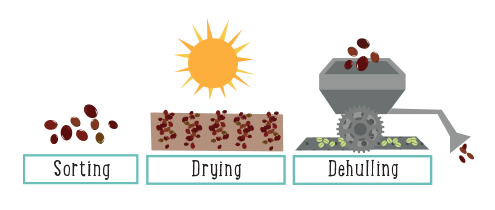
Washing treatment is to remove peel, pulp, pectin, etc., then fermented in the flume, and then dried; washing process: selecting → to remove pulp, → fermentation, → washing, → drying, → shelling → selection and classification.

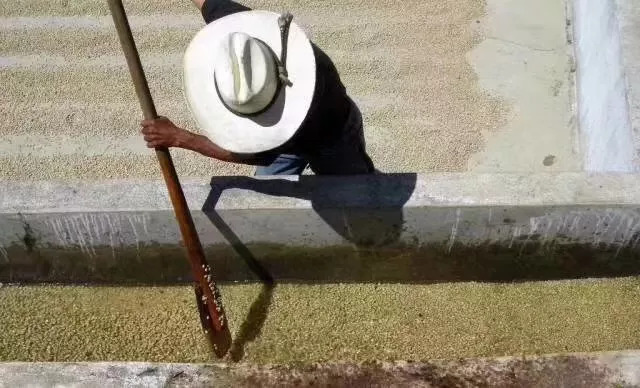
Washing method
Peeling, tanning and honey treatment are the two treatments in the middle. In the 1990s, taking advantage of the unique dry climate, Brazil invented the peeling and tanning method (pulped natural), which requires less equipment and water resources than the traditional water washing method, and the quality is better than the traditional sun drying method. Brazil peel is usually sunburned in the sun.
Honey treatment, called HoneyProcess or MielProcess, is the method of peeling off the pulp and drying the fruit with endocarp. Honey treatment is the process of making raw beans with mucous membrane for sun drying. After the outer pulp of the coffee bean is removed, there will be a layer of sticky jelly. In the traditional washing method, it will be washed away with clean water, but because of the water resources limitations of some high-altitude areas, this method of drying directly with pectin has been born. Nowadays, in most manors, such as Costa Rica, honey treatment takes a canopy to dry.
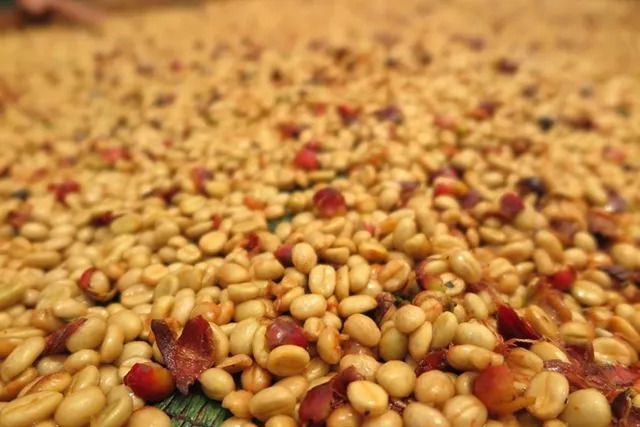
Peeling and tanning in Brazil, the most common treatment of Brazilian coffee is peeling and tanning and semi-washing in Brazil.
What is half-washed and half-sunburned coffee beans? The difference between the two treatments:
The treatment of half-sun in Brazil is basically that when more than 3/4 of the coffee fruit in the coffee garden is ripe, it begins to be harvested mechanically, and the pectin beans are removed by a pulp planer after being screened in a large trough in the same way as washing. After exposure outdoors, 2-3 days later, the water content of beans is further reduced to less than 12% by using a dryer, the dried beans are stored in a special container for about 10 days, and finally the sheep skin is ground off before export.
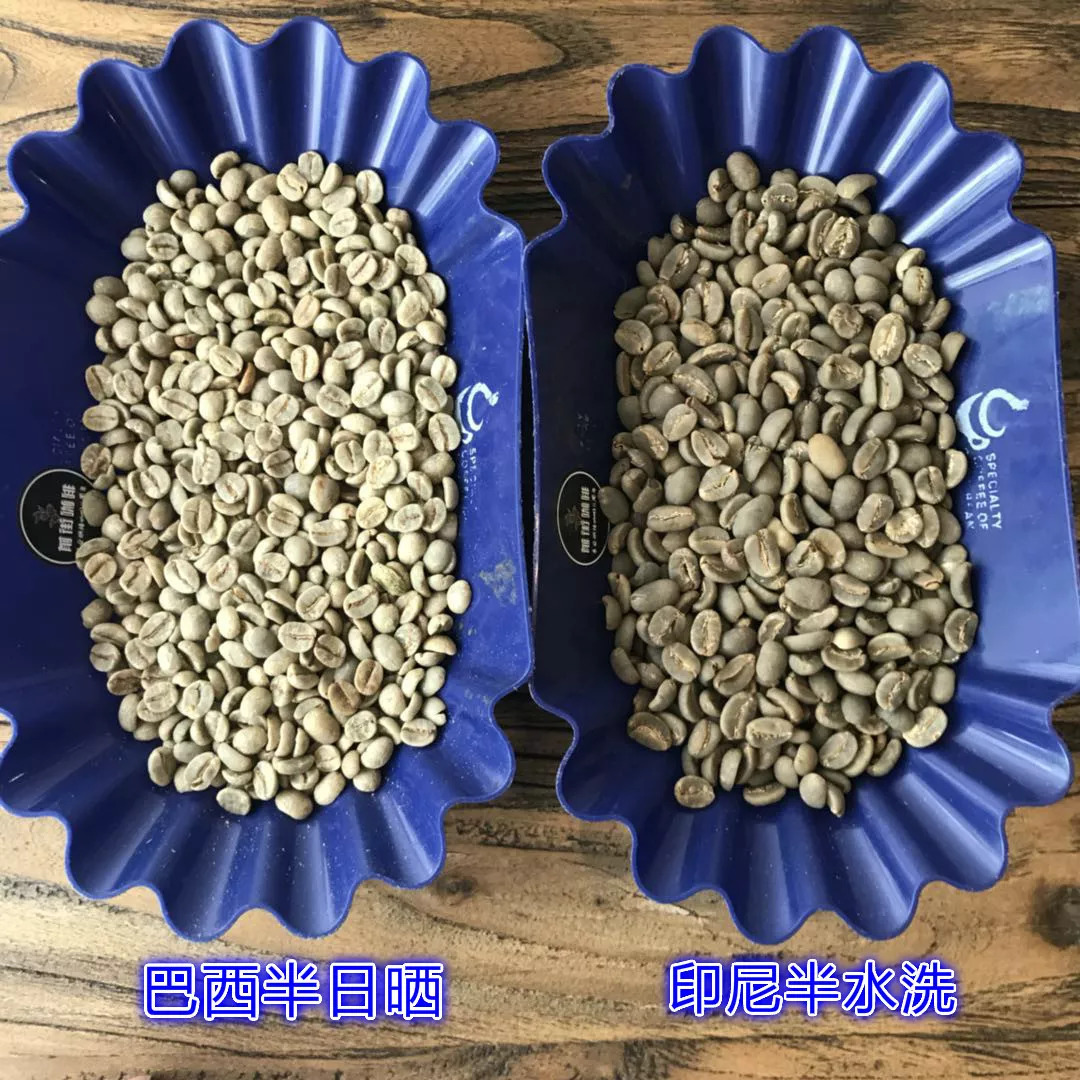
Semi-washed:
Some humid areas have developed semi-washed raw beans according to their own climatic characteristics, which is now popular not only in countries with high humidity in Central and South America, but also in Indonesia, Myanmar, Laos and other countries in Asia. The treatment method of half-washing is similar to that of the first half of half-sun, except that after taking out the raw beans with pectin, it is not taken out from the sun, but removed with the pectin scraper, and the smooth beans can be obtained with a small amount of water. Then go to the sun, and when the water content is less than 12%, you can enter the warehouse.
Manning's special treatment is semi-washing:
The Indonesian wet planing method is very common in Indonesia, which is different from the general washing and tanning methods: the endocarp of washed, honey-treated or sun-dried beans is retained until the bean body is dehydrated and hardened, and the moisture content is reduced to 12%. Or sealed and stored for 1-3 months before grinding off. However, the wet planing method takes off the endocarp when the bean body is wet and soft, and the moisture content is as high as 30-35%, so that the surface of the raw bean is directly exposed, and then continue to dry. This is because Sumatra has a humid climate and a method developed according to local conditions to speed up drying.
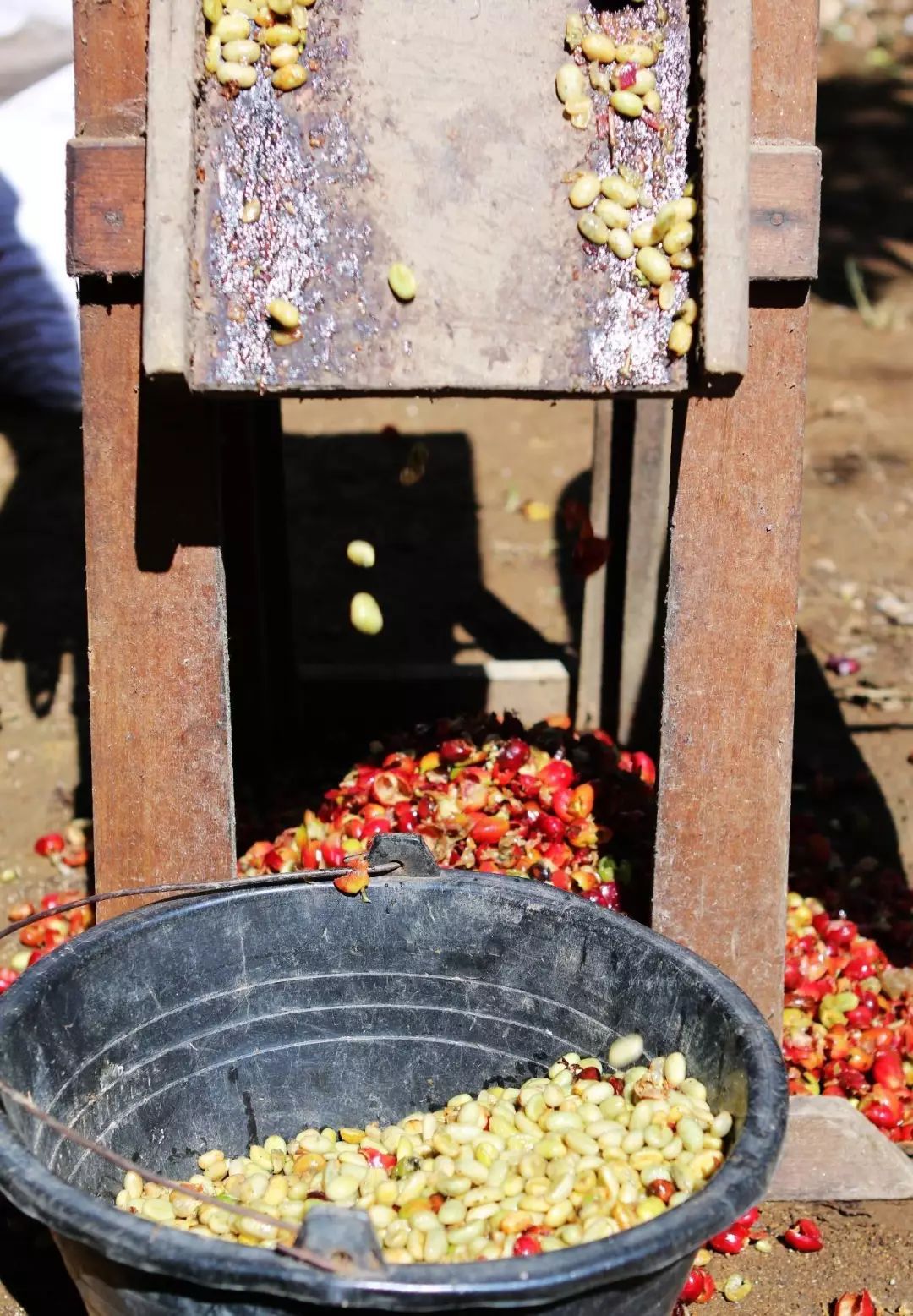
Finally, let's summarize the characteristics of various ways of handling raw beans:
Acidity: washing > half washing > half sun > honey treatment > wet planing > solarization.
Sweetness: sun > honey treatment > half-sun > half-washing > washing > wet planing.
Production risk: wet planing / solarization > washing / honey treatment > semi-washing
Equipment cost: washing / half washing > half sun > honey treatment / wet planing > solarization
The amount of water used: washing > half washing > half sun > honey treatment / wet planing method
As a newcomer to coffee, sour as needed? Or is it more fermented? For example, it tastes stronger or tastes lighter, so you can recommend the most suitable coffee according to the flavor characteristics of your own coffee treatment.
If you like to be sour, choose water to wash beans, such as Kenya, Yega Xuefei (water washing), like mellow, choose Mantenin (wet planing), and some sweet beans, sun red roses, sun red cherries and other sun beans. Costa Rican honey treatment (sweet).
Important Notice :
前街咖啡 FrontStreet Coffee has moved to new addredd:
FrontStreet Coffee Address: 315,Donghua East Road,GuangZhou
Tel:020 38364473
- Prev

What is the method of making ice drop coffee? the taste of ice drop coffee.
Professional coffee knowledge exchange more coffee bean information please follow the coffee workshop (Wechat official account cafe_style) what is the ice drop coffee? Ice drop coffee, to put it simply, is to extract coffee by low temperature and slow drop. Brewing coffee usually uses hot water to quickly extract the odor molecules from coffee cells.
- Next
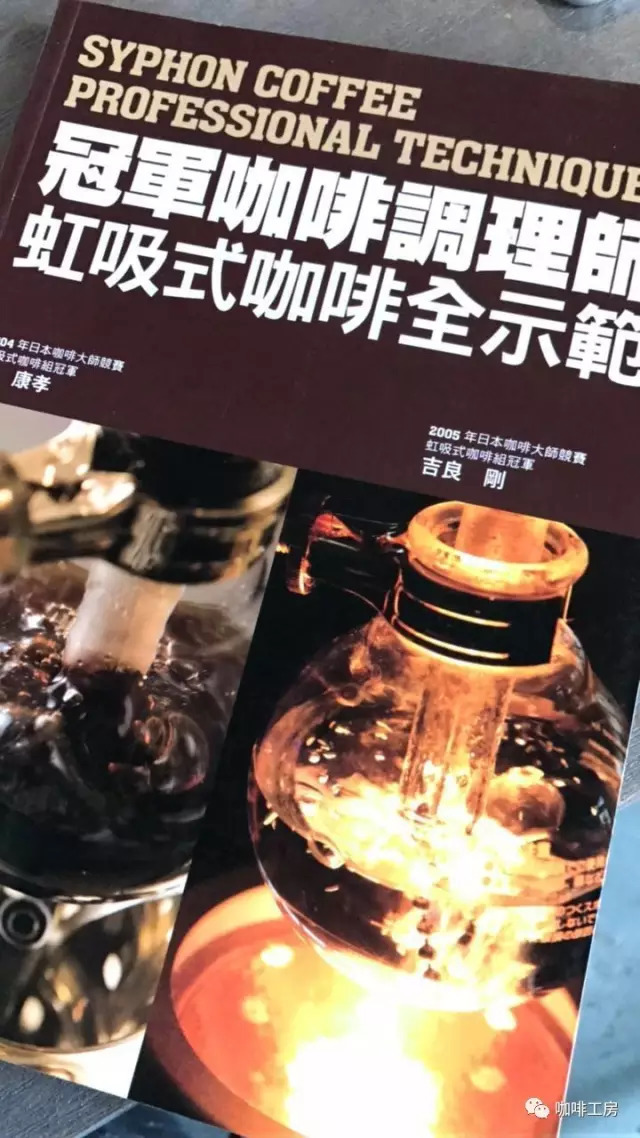
Siphon Coffee | A siphon pot tutorial teaches you how to extract coffee for 2 people
Professional coffee knowledge exchange more coffee bean information please follow the coffee workshop (Wechat official account cafe_style) Coffee novices who like to use siphon pots must be looking forward to the tips for siphon pot cleaning. Then keep reading. Siphon brewed coffee is a favorite of many coffee fans. Some people say that because it can extract the most perfect part of the coffee, especially if the coffee
Related
- What is the meaning of lactic acid fermentation with coffee bean treatment?
- How to judge the state of foam by sound?
- How does the latte pull out the unicorn pattern? Come to get for a little trick to improve the flower pull!
- Will flower pulling affect the taste of the latte?
- Do you know the history of coffee?
- The difference between honey treatment and sun washing what is raisin honey treatment?
- What kind of milk can a novice use to make coffee foam to keep the foam longer? The correct method and skills of milking tutorial sharing
- Why do washed coffee beans taste sour? Flavor characteristics of washed Coffee
- Introduction to the skill of how to practice the size and height of water injection around the circle of hand-brewed coffee
- How do beginners practice coffee flower drawing from scratch?

